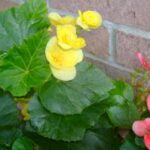In order for seeds to germinate, they need the proper combination of oxygen, moisture, temperature, and sometimes light. As the seed takes up water, it activates enzymes that direct the germination process. The seed absorbs the water, expands, and then the seed coat opens to allow the shoot or sprout to emerge. Oxygen, which increases respiration, and correct temperature settings are needed to activate growth enzymes. Although most seeds do not need light to germinate, a few do such as lettuce and begonias. The gardener must also plant seeds at specific depths within the growing medium in order for seeds to germinate. Starting seeds inside gives the gardener an advantage in that they can control the environment inside versus the growing conditions outside.
Germination Temperature
Germination or soil temperature varies from as low as 32 up to 105 degrees Fahrenheit. Annuals prefer 70 to 75 degrees Fahrenheit to germinate, while perennials germinate between 60 and 65 degrees Fahrenheit. Although the air temperature may be within the correct temperature range, the growing medium may be too low, thus the seeds will not germinate. Provide regulated heat under the tray holding the seeds to increase the temperature to the proper level. Be sure to monitor the temperature of the growing medium using a thermometer and adjust the regulated heat if necessary.
Moisture
Providing the right amount of moisture to the growing medium is important in that if there is too much water and oxygen is limited it will prevent the normal germination process. Also too much water is a breeding ground for disease. While on the flipside, if there is not enough water, germination will not occur. The watering standard for growing mediums is that it holds all the water it needs while the access drains away.
Before planting seeds, add water to the growing medium, mixing it well to insure all is moist. After seeds have been planted, lightly mist the soil and cover the container with a plastic cover to prevent drying out. Be sure the plastic does not touch the top of the medium, and watch for condensation, as this is a breeding ground for mold. To avoid any possibility of disease, use a medium that has been sterilized or use a chemical soil drench (fungicides that kill spores that may be present). Some seeds such as sweet corn, which is highly susceptible to seed rots, will come pre-treated for this and other diseases. Damping off is another problem gardeners should watch for with seedlings, which is caused by various fungi such as Pythium, or Rhizoctonia.
Planting Depth
Plant seeds according to their packaging. However, If no guide is available, plant seed one to two times its diameter. Extremely small seeds can be scattered over the top of the growing medium.
When to Plant
Read the seed package to determine when seeds should be sown. Most packages will state when to sew seeds indoors and when to transplant them to the outside.
Source: Mastergardener classes




